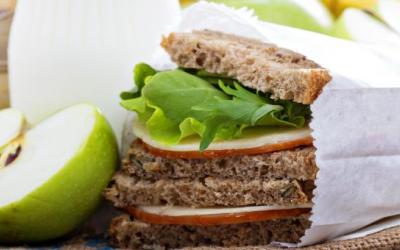10 facts about Li Keqiang, former Chinese premier and Xi Jinping ally

Photo is illustrative in nature. From open sources.
On October 27, former Premier of the State Council of CHINA Li Keqiang died at the age of 69. RBK has compiled key facts about the politician who served as the second-in-command in China for ten years. Li Keqiang was born on July 1, 1955, in Anhui Province to a government official . Li's youth coincided with the Cultural Revolution of 1966–1976. After finishing school, he, like many of his peers, was sent to work for several years on a collective farm in a remote village. In 1976, Li joined the Communist Party of China and became secretary of the local party branch. Despite his humble origins, in 1978 Li entered the prestigious Peking University, where he studied law. During these years, he became acquainted with Western liberal ideas and also began speaking English fluently. In 1982, Li Keqiang became secretary of the university branch of the Communist Youth League of China (CYCL), and a year later, he joined its national secretariat and became a protégé of Hu Jintao. By 1993, Li had become the first secretary of the CYCL . He also earned a doctorate in economics.
Many saw Li Keqiang as Hu Jintao's successor as leader of the Communist Party, but he ultimately yielded to Xi Jinping, whom party elders considered a more compromise option. Li became Premier of the State Council , a position he held for 10 years, from 2013 to 2023.
Vice Premier Li Keqiang with former US Secretary of State Henry Kissinger in Beijing, March 2010 (Photo: Huang Jingwen / Xinhua / ZUMA / Global Look Press) With German Chancellor Angela Merkel at the presentation of driverless cars at Tempelhof Airport in Berlin, July 2018 (Photo: Fabrizio Bensch / dpa / Global Look Press) With former Cuban President Fidel Castro in Havana, September 2016 (Photo: Alex Castro / Courtesy of Cubadebate /REUTERS )With Russian President Vladimir Putin in Moscow, September 2019 (Photo: Pavel Golovkin / Reuters)With US President Barack Obama before a group photo at the 27th ASEAN summit in Kuala Lumpur, Malaysia, November 2015 (Photo: Jorge Silva / Reuters)Russian and Chinese Prime Ministers Dmitry Medvedev and Li Keqiang at the Pavlovsk Museum-Reserve in September 2019 (Photo: Global Look Press)With Belarusian President ALEXANDER LUKASHENKO in Beijing in July 2013 (Photo: Andy Wong / Getty Images)
Li Keqiang (second from right) with his classmates at Peking University (Photo: Peking University)A rapid rise through the ranks of the KSMK allowed Li to ascend to a new level in the political hierarchy. By 1998, he had already become the HEAD of the Henan provincial government in the central-eastern part of the country. In this position, he significantly strengthened the region's economy, raising it from 28th to 18th place in GDP. However, Li became embroiled in a scandal over the authorities' attempts to conceal the mass HIV infection of the local population due to poorly organized blood collection. In 2004, Li transferred to the government of another Chinese province, Liaoning, where he focused on developing transportation. At the time, the politician criticized China's official GDP statistics for their "artificiality" and believed it was necessary to focus on electricity consumption trends, as well as rail freight volumes and bank loans, as real indicators of economic growth. Since 2010, The Economist newspaper has introduced the informal "Li Keqiang Index," which incorporates these metrics to measure China's economy.
Li Keqiang at the power control center during a visit to State Grid Corporation of China in January 2023. (Photo: Gao Jie / XinHua / Global Look Press)Li Keqiang inspecting CNR in Jilin Province in April 2015. (Photo: Ding Lin / ZUMAPRESS / Global Look Press)Li Keqiang at the construction site of a railway station in Changsha County, Hunan Province, in July 2014. (Photo: Ma Zhancheng / Xinhua / Global Look Press)His close relationship with Hu Jintao, who became General Secretary of the Communist Party of China (CPC) in 2002, helped Li Keqiang achieve another career breakthrough and enter the national government. In 2007, he became a member of the Politburo Standing Committee of the CPC Central Committee, and in 2008, Li was elected Vice Premier of the State Council. In 2010, Li Keqiang was also appointed Vice Chairman of the CPC Military Commission.
Many saw Li Keqiang as Hu Jintao's successor as leader of the Communist Party, but he ultimately yielded to Xi Jinping, whom party elders considered a more compromise option. Li became Premier of the State Council , a position he held for 10 years, from 2013 to 2023.
Vice Premier Li Keqiang (left) and Vice President Xi Jinping before a meeting of the National People's Congress in March 2012. (Photo: Feng Li/Getty Images)Although Li Keqiang was formally the second-in-command in the country, he soon found himself in Xi Jinping's shadow and wielded significantly less influence than his predecessors. Moreover, Li and Xi never formed a strong partnership, and their views often diverged : while Li advocated economic liberalization, Xi advocated greater state control. And during the pandemic,During the covid-19 pandemic, Li called for easing lockdown restrictions to maintain economic growth, while Xi pursued a "zero tolerance" policy that saw entire businesses shut down if an employee tested positive.
Li Keqiang meets with medical workers at a hospital in Wuhan, January 27, 2020. (Photo: Li Tao / Xinhua / Global Look Press)During his premiership, Li also focused on overcoming the consequences of the 2008 global financial crisis and reducing the debt burden. To this end, the authorities decided to slow GDP growth and reorient investment to avoid economic overheating. The Chinese government's policy became informally known as "Liconomics ," named after Li Keqiang. Perhaps due to his humble origins, Li Keqiang placed great emphasis on addressing inequality in Chinese society. In 2020, he lamented that as many as 600 million Chinese earn less than $140 per month.
Li Keqiang inspects crops in Hubei Province during an inspection tour in December 2012. (Photo: Huang Jingwen / ZUMAPRESS / Global Look Press) Li Keqiang meets with workers of Yunnan Tin Group in June 2010. (Photo: Huang Jingwen / ZUMAPRESS / Global Look Press) Li Keqiang talks with villagers in Yunnan Province in June 2010. (Photo: Huang Jingwen / Xinhua / GLobal Look Press)In October 2022, Li was removed from the Politburo Standing Committee of the CPC Central Committee, despite being two years below the informal retirement age of 70. In March 2023, Li was dismissed as Premier of the State Council of the People's Republic of China. He was succeeded by Li Qiang, a close ally of Xi Jinping since his time in the Zhejiang provincial government. On October 26, 2023, Li Keqiang suffered a heart attack while in Shanghai. Despite medical efforts, he died on the night of October 27. He was 68 years old. He is survived by his wife and daughter.
Vice Premier Li Keqiang with former US Secretary of State Henry Kissinger in Beijing, March 2010 (Photo: Huang Jingwen / Xinhua / ZUMA / Global Look Press) With German Chancellor Angela Merkel at the presentation of driverless cars at Tempelhof Airport in Berlin, July 2018 (Photo: Fabrizio Bensch / dpa / Global Look Press) With former Cuban President Fidel Castro in Havana, September 2016 (Photo: Alex Castro / Courtesy of Cubadebate /REUTERS )With Russian President Vladimir Putin in Moscow, September 2019 (Photo: Pavel Golovkin / Reuters)With US President Barack Obama before a group photo at the 27th ASEAN summit in Kuala Lumpur, Malaysia, November 2015 (Photo: Jorge Silva / Reuters)Russian and Chinese Prime Ministers Dmitry Medvedev and Li Keqiang at the Pavlovsk Museum-Reserve in September 2019 (Photo: Global Look Press)With Belarusian President ALEXANDER LUKASHENKO in Beijing in July 2013 (Photo: Andy Wong / Getty Images)
Read together with it:
- A fire at the Merci Agro Sakhalin pig farm killed 1,500 pigs, but pork production will not be affected.Deputy Minister of Agriculture and Trade of the region Inna Pavlenko noted that other pig farms will help compensate for the loss. Merci Agro Sakhalin plans to restore its capacity and livestock, which will help avoid a pork shortage on the local market. The restoration will be funded by insurance payments, and veterinarians have already analyzed the condition of the remaining animals and determin...
- An HSE expert reported on the "evolution of inequality" in access to healthcare.An HSE researcher analyzed Russians' access to healthcare over a ten-year period. In 2021, the influence of financial factors became noticeable for the first time: low income reduces the likelihood of visiting a DOCTOR.Over the ten years from 2011 to 2021, the number of Russians requiring medical care but not receiving it remained virtually unchanged, according to a study by Lyudmila Zasimova, hea...
- The IEA sees a risk of a decline in oil production in Russia due to sanctions.The IEA sees a risk of reduced oil production in RUSSIA due to US sanctions , but maintains its production forecast. According to the IEA, Russian oil exports will remain unchanged.There is a "significant downside risk" to Russia's oil production forecast due to US sanctions, the International Energy Agency (IEA) said in a report.BLOOMBERG . The agency's experts believe that the latest US sanction...
- UniCredit заявил о галактических усилиях из-за санкций против РоссииUniCredit старается не нарушить «более 15 тыс. санкций», а также не «совершать ошибки», которые позволят изъять его активы в России, заявил гендиректор. После начала военной операции банк начал рассматривать возможность ухода Итальянский банк UniCredit прилагает «галактические усилия», пытаясь соблюсти международные санкции в отношении своего российского подразделения. Об этом заявил генеральный д...
- Колумбия: При экспорте скота сертификация и прослеживаемость больше не являются необязательнымиВысококачественное животноводство, особенно при экспорте, требует сертификации и прослеживаемости. Это необходимые условия для выхода и конкуренции на многих международных рынках, а также на некоторых всё более требовательных внутренних рынках. Колумбийское животноводство не является исключением из этих правил, и, хотя предстоит ещё многое сделать, всё большее число ферм и компаний внедряют эти ме...
- Китайский рынок мяса: консолидация, меры безопасности и проблема субпродуктов«Мы завершаем выставку CIIE в Шанхае, в целом хорошую выставку, где мы видим консолидированные цены, как это было с начала года, но в то же время рынок ожидает решения по защитной мере, определения которой должны быть даны в конце ноября», — сказал он Valor Agregado Agro. Лидер пояснил, что глобальная ситуация характеризуется «колебаниями на международном рынке, вызванными интенсивной геополитичес...
- США объяснили снятие санкций с проекта АЭС в Венгрии с участием РоссииСША хотят, чтобы строительство АЭС «Пакш-2» завершилось, это необходимо, чтобы Венгрия стала энергетически независимой, заявил Рубио. Орбан сообщал, что после встречи с Трампом добился исключения из санкций Соединенные Штаты вывели из-под санкций проект АЭС «Пакш-2» в Венгрии, подтвердил госсекретарь Марко Рубио после встречи министров иностранных дел стран G7 в Канаде. Ранее об этом говорил венге...
- Зеленский ввел санкции против своего бизнес-партнераМиндич и Александр Цукерман, который, как считается, отвечает за его финансовые вопросы, значатся как граждане Израиля. Санкции против них ввели на три года, они включают блокировку активов. На Украине сочли ограничения мягкими Владимир Зеленский Президент Украины Владимир Зеленский подписал указ о введении санкций в отношении совладельца студии «Квартал 95» Тимура Миндича и его знакомого бизнесме...
- Ukrainian companies have been hit by US sanctions due to their ties to Iran.The United States imposed sanctions on two Ukrainian companies, considering them to be front companies for an Iranian agent engaged in procurement for the Iranian state corporation HESA, which produces, among other things, Shahed drones.Two companies registered in Ukraine have been subject to US sanctions related to Iran , according to a statement from the US Treasury Department's Office of Foreig...




























































